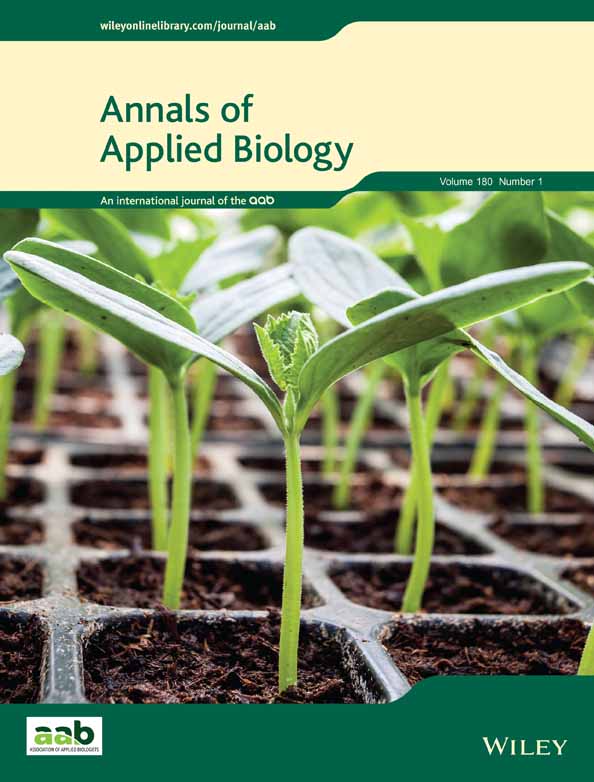Ver ítem
- xmlui.general.dspace_homeCentros Regionales y EEAsCentro Regional Buenos Aires SurEEA Hilario AscasubiArtículos científicosxmlui.ArtifactBrowser.ItemViewer.trail
- Inicio
- Centros Regionales y EEAs
- Centro Regional Buenos Aires Sur
- EEA Hilario Ascasubi
- Artículos científicos
- Ver ítem
Climate effect on Avena fatua field emergence dynamics: a 38-year experiment in the Semiarid Pampean Region of Argentina
Resumen
Climate events modulate weed population dynamics mainly by influencing field seedling emergence patterns. Field experiments aiming to study the influence of climate on the early-stage establishment of weeds are of utmost importance from a practical and strategic decision-making management point of view. The objective of this work was to analyse the effect of climate variations on the field emergence dynamics of Avena fatua in the southwest area of the
[ver mas...]
Climate events modulate weed population dynamics mainly by influencing field seedling emergence patterns. Field experiments aiming to study the influence of climate on the early-stage establishment of weeds are of utmost importance from a practical and strategic decision-making management point of view. The objective of this work was to analyse the effect of climate variations on the field emergence dynamics of Avena fatua in the southwest area of the semiarid Pampean region of Argentina. Field emergence patterns of A. fatua were monitored from 1977–2015. Seedling counts were destructively sampled at weekly intervals. Three quadrats (1 m2 each) were randomly distributed on a 5 ha experimental field with a high natural population density of A. fatua in the absence of a crop. Results show that the emergence strategy of this species is highly plastic with a striking variation in response to year-to-year climate signals. Avena fatua field emergence strategies were classified as staggered, early, medium and late based on both chronological and hydrothermal-time parameters. In the short-term, precipitation regimes during both the after-ripening and emergence phases largely explained the resulting emergence strategy. In the long-term, the combined effect of a reduction in both the precipitation frequency and the mean minimum temperature correlated with an increase in the staggered emergence pattern. Results also point out the adaptability of A. fatua in the area under study, further suggesting a bet-hedging fitness strategy that could diminish the risk of population decline under changing climate scenarios. From an agronomic perspective, the occurrence of staggered emergence patterns with an extended emergence window would complicate the definition of the optimal time for weed control. Thus, tailoring decisions based on the Southern Oscillation Index (SOI) episodes (neutral, negative or positive) forecast plus the implementation of weed emergence models could lead to more accurate and sustainable weed management decisions.
[Cerrar]

Autor
Renzi Pugni, Juan Pablo;
Traversa, Guadalupe;
Vigna, Mario Raul;
Chantre Balacca, Guillermo Ruben;
Fuente
Annals of Applied Biology (First published: 13 February 2022)
Fecha
2022-02
Editorial
Wiley
ISSN
0003-4746
1744-7348
1744-7348
Formato
pdf
Tipo de documento
artículo
Palabras Claves
Derechos de acceso
Embargado
 Excepto donde se diga explicitamente, este item se publica bajo la siguiente descripción: Creative Commons Attribution-NonCommercial-ShareAlike 2.5 Unported (CC BY-NC-SA 2.5)
Excepto donde se diga explicitamente, este item se publica bajo la siguiente descripción: Creative Commons Attribution-NonCommercial-ShareAlike 2.5 Unported (CC BY-NC-SA 2.5)

